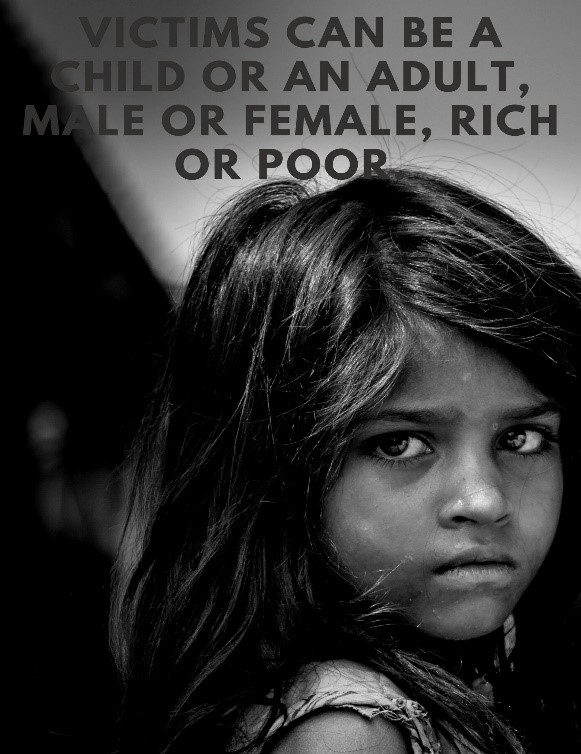Social Learning Theory in Criminology Fully Explained
Introduction
The social learning theory is a sub-branch of the learning theory that Albert Bandura and his associates developed. This theory includes what is known as observational learning and operant conditioning. In these two types of learning, one’s behaviors can be learned or acquired through different mechanisms.
Observational Learning
It is a type of learning where one learns by observing the behavior of others without participating in any actions. An example of this type of learning is when a child observes their mother performing a specific task (such as cooking). After seeing how it is done, this child will perform the same task when allowed to do so.
Another way of learning through observation is watching how a specific behavior can lead to a particular outcome. An example is when one observes another person being aggressive to another person and that this aggression results in the other person running away from the aggressor. This observation can then lead a person to conclude that aggression leads to an outcome of another person running away from you.
Operant Conditioning
It refers to a type of learning where the consequences of the actions can alter a person’s behavior. One example is when someone is being reinforced for doing an excellent job of doing something. Positive reinforcement will increase the chances of this person being able to perform better next time.
An example of operant conditioning can be seen when prisoners are given a certain amount of privileges for showing positive behavior in prison (such as watching television or earning money).
Although the social learning theory is a sub-branch of the learning theory, it is not necessarily specific to psychology. In criminology, it is beneficial because it shows how people learn from observing other people’s behaviors.
The social learning theory of criminology is based on the three main components of behavior: biological, psychological, and social factors.
Biological Factors
Biological factors refer to the genetic and biological components of behavior. They may be either inherited (passed down from previous generations) or non-inherited. Some of the biological factors that have been shown to influence criminal behavior include age, gender, intelligence, and culture.
Age is one of the biological factors that has been shown to influence criminal behavior. For example, an individual who commits a crime at 40 years old is more likely to have a criminal record than an individual who commits the same crime at age 20 years. This supports the theory that criminal behavior is most likely to occur when an individual is in their late teens and early 20s, which supports the social aging theory.
The gender factor is another biological factor that has been shown to influence criminal behavior. Male criminals are more likely to commit violent crimes, whereas female criminals are more likely to commit theft, fraud, and prostitution. Crime is passed down through generations depending on one’s gender.
Intelligence has been shown to affect criminal behavior, as individuals with higher intelligence are less likely to commit crimes. This example supports the theory that criminals are at a lower intelligence level.
Culture is also a biological factor that has been shown to influence behavior. Cultures that are based on the value of respect for others are less likely to have crime. This happens because cultures based on respect for their people and society are less likely to have crime.
Psychological Factors
Psychological factors refer to the cognitive and emotional components of behavior. These components affect social learning, and thus, are essential when discussing the social learning theory. Some of these factors include personality traits, intelligence, and attitudes.
Personality is a combination of different characteristics that make an individual unique. Personality refers to the patterns of thoughts, feelings, and behaviors that make up a person.
Different behavior patterns will affect how an individual interacts with society and could either lead them to commit a crime or not commit a crime. Thus, an individual’s personality traits play a significant role in developing their behavior and how they interact with society.
Intelligence refers to the abilities and skills of an individual. An individual could be highly intelligent or lacking in intelligence. Intelligence does not refer to an individual’s academic success or failures. One can be brilliant and perform poorly in school, or vice versa.
However, it is essential to note that as an individual’s intelligence level increases, they can learn and adapt. Thus, if one has a high level of intelligence, they are more likely to adapt and learn from their mistakes.
Attitude is the direction in which an individual’s thoughts are directed. One can have positive or negative attitudes towards a subject or idea. Some examples of positive attitudes are respect, trust, and confidence. Negative attitudes are negative towards something or someone; examples include pessimism, distrust, and fear.
Positive attitudes are more likely to be developed in individuals who have been raised with strong family values and respect for others. This means that if an individual has been raised to respect others and their property, they are more likely to have a positive attitude towards these things.
Thus, this will decrease the likelihood of committing crimes, hence the theory that attitudes towards certain behaviors are learned from others or personal experiences.
Social Factors
Social factors relate to how an individual interacts with society and others around them. These are vital factors to the social learning theory, as it is the individual’s experience with these factors that will allow them to learn and adapt. Some examples of social factors include culture, socioeconomic status, and family structure.
Culture
Culture is the social and behavioral patterns that are passed down through generations. These values, beliefs, and traditions are learned early in life, usually from parents, relatives, or other family members. Culture can also play a role in how individuals are raised and what types of behaviors are acceptable for them.
If a culture values respect for others and property, then the individual is more likely to follow this social belief. Thus, if an individual has been raised to respect others and their property and other social beliefs, they are more likely to follow these values.
Socioeconomic Status
Socioeconomic status refers to the social class of an individual. In the United States, socioeconomic status is determined by one’s occupation, education, and income. Occupations can affect how individuals learn. People interact with others who have similar professions and use the same social language or learned behavior.
Social language is the words, phrases, or slang used by a group of people and gives knowledge about their culture or values. An example is an individual who has a job that requires them to deal with the public. This will need them to learn how to interact with different people. They will learn the correct social language to use with others, including slang used by their co-workers.
Suppose an individual has a low socioeconomic status, meaning they do not have much money and may live in a rough neighborhood. In that case, they will likely be exposed to negative behavior. This influence can be from their peers, the people they live with or see every day, or even from the media.
Family Structure


Family structure is based on the family unit, specifically the number of parents and or guardians. A married family with one father and mother has a different structure than a single-parent household. A single mother may not have the time to spend with her child or teach them concepts that a father could.
According to Bandura, social learning occurs because of the observational skills individuals use to recognize their role models’ behaviors. The observers apply these behaviors to their own lives.
Family structure can also affect social learning because of the time and interest that an individual’s parents spend with them or teach them. If the single mother in the example above has to work multiple jobs, she may have less time available for her child.
It is also possible for an individual to spend time with others who do not positively influence. This means that they are more likely to learn negative behavior and values.
If a child is left at home while their mother is working, they may have more time to spend with neighborhood children. These children may not be as well behaved or have the same values as those of the mother. Thus, they may teach their child how to steal, vandalize, or perform other anti-social behaviors.
Additionally, if the mother is in a relationship with someone who does not value education or has a good work ethic, they may teach the child these same values.
The Media
The media is one way in which an individual can be exposed to social learning through observing others. An individual can learn how to clean a house from watching an advertisement or change the oil in their car by watching a commercial. It is also possible to learn how to perform criminal acts through watching movies or television.
You may also be interested in Moral Panic Examples and Stages
Criminological Theories Stemming from the Social Learning Theory
Differential Reinforcement Theory
Differential reinforcement theory suggests that learning is a function of an individual’s consequences after performing or engaging in the desired behavior. If an individual is rewarded for a behavior, they are more likely to adopt the same behavior in the future.
In contrast, if individuals are punished for a behavior, they are less likely to engage in that behavior again. The differential reinforcement theory suggests that reinforcers, or consequences for behaviors, can be of three types: positive, negative, and escape. This is the theory of rewards and punishments.
Positive reinforcement uses a reward, or something desirable to an individual, to repeat a behavior. An example is when an individual receives a dollar from their spouse for doing the dishes. If an individual is more likely to want money than do the dishes, they will be more likely to repeat this behavior in the future.
Negative reinforcement uses the removal of something undesirable to an individual to get them to repeat a behavior. An example is when an individual’s partner yells at them if they are late to dinner. If the individual does not want to be yelled at, they will always arrive on time.
Escape is another way in which an individual can be negatively or positively reinforced. An example of negative escape is when an individual finds a way to get out of doing chores by telling their parent that they have plans with friends. An example of positive escape is when an individual asks a stranger for directions to get out of walking home from work.
Differential Association Theory
Differential association theory suggests that an individual’s association with others and the social environment in which they live can affect their behavior. This is because of the different types of groups with which an individual can be associated.
Primary Groups
A primary group refers to a group that has face-to-face interaction. The characteristics of a primary group are that they have interdependence, cohesiveness, and loyalty.
Primary groups include families, close friends, and peer groups. A primary group is more likely to reinforce behavior because of the close bonds between the members of the group and the individual’s loyalty to them.
A primary group engages in shared activities, possibly increasing an individual’s chance of engaging in crime.
Secondary Groups
A secondary group refers to a social unit that an individual establishes after they leave their primary environment. Secondary groups are less likely to reinforce behavior due to the lack of loyalty and interdependence.
You may be interested in the Washington Consensus
Ronald Akers and Burgess Contribution in the Social Learning Theory
Burgess and Akers (1985) found seven steps of the learning process in Social Learning Theory, or as they called it, Differential Association Theory. These processes are as follows:
The first step is the pre-delinquent phase, where a person commits no crimes.
This second step implies that after the first step, the person is aware that there are two different types of groups – primary group and secondary group.
The Primary Group includes family members or good friends with whom you can spend more time. A secondary group where the person will be less involved, such as school groups.
The third step is that people learn more from the latter groups because they are less profound than primary groups.
The fourth step is the delinquent phase, when a person commits a crime.
The fifth step is the post-delinquent phase, where a person has committed crimes before and learned that they do not want to commit crimes anymore.
The sixth step is the re-offending phase, when a person has committed crimes earlier but will do so again.
The seventh and last step is the escalation phase, where a person will commit more serious crimes to satisfy their needs.
According to Akers and Burgess, crime and deviance can be explained in the differential association theory. It can explain criminal behavior, as it shows how an individual learns behaviors from their social environment.
Mimetics
The word mimetic comes from the Greek word mimesis, which means “imitating.” In terms of criminology, mimetics are those who copy the behavior of others. Mimetics are more likely to engage in criminal behavior due to the group they associate with and their family and friends.
The mimetic theory suggests that the agent, or person engaging in delinquent behavior, will observe and imitate models. The agency for this behavior is of a primary group. Collective behavior is the general delinquent acts committed by members of the agent’s group or social circle.
False Consciousness
False consciousness is the term used when individuals do not know that they are engaging in a behavior. These individuals, who may have committed crimes without knowing, may be unaware that their actions are illegal.
False consciousness occurs in deviant groups when they do not want to admit to others that they are engaging in deviance. This type of behavior is more common in outlier groups due to the fear of exposure and peer pressure.
Differential Socialization
Differential socialization, or differential association in criminology and sociology, refers to how people learn things differently. A mother may tell her son that stealing is wrong, whereas her daughter may never be told.
The boy will be more likely to steal a candy bar from a store because he has learned that stealing is wrong. The girl, however, will not be taught that theft is inappropriate and may never steal a candy bar.
Criminological Application of the Social Learning Theory
Social learning theory is used in criminology to help in the following:
- Development of early intervention programs to prevent criminal behavior from occurring in the future.
- Study patterns of criminal conduct and behaviors to understand why crimes occur, how they occur, and what social factors lead to the behaviors.
- Theories such as differential association theory have been used in criminology to help understand social behavior and learn it.
This theory is criticized for the following reasons:
- Social learning theory has been criticized as it does not explain why some people are predisposed to crime.
- It is also criticized in that it does not explain why one person will be more inclined to imitate their peers’ behavior than another person.
- The theory also does not explain how a person learns to commit deviant crimes; it only shows how someone learns from their social environment.
You may be interested in general crime theories
Bottom Line
The social learning theory suggests that we can learn new behaviors by watching other people. People who are more responsive to the environment around them and those who have a propensity for imitation or modeling behavior will be most influenced by their surroundings.


I‘m a freelance content and SEO writer with a passion for finding the perfect combination of words to capture attention and express a message. I create catchy, SEO-friendly content for websites, blogs, articles, and social media. My experience spans many industries, including health and wellness, technology, education, business, and lifestyle. My clients appreciate my ability to craft compelling stories that engage their target audience, but also help to improve their website’s search engine rankings. I’m also an avid learner and stay up to date on the latest SEO trends. I enjoy exploring new places and reading up on the latest marketing and SEO strategies in my free time.







